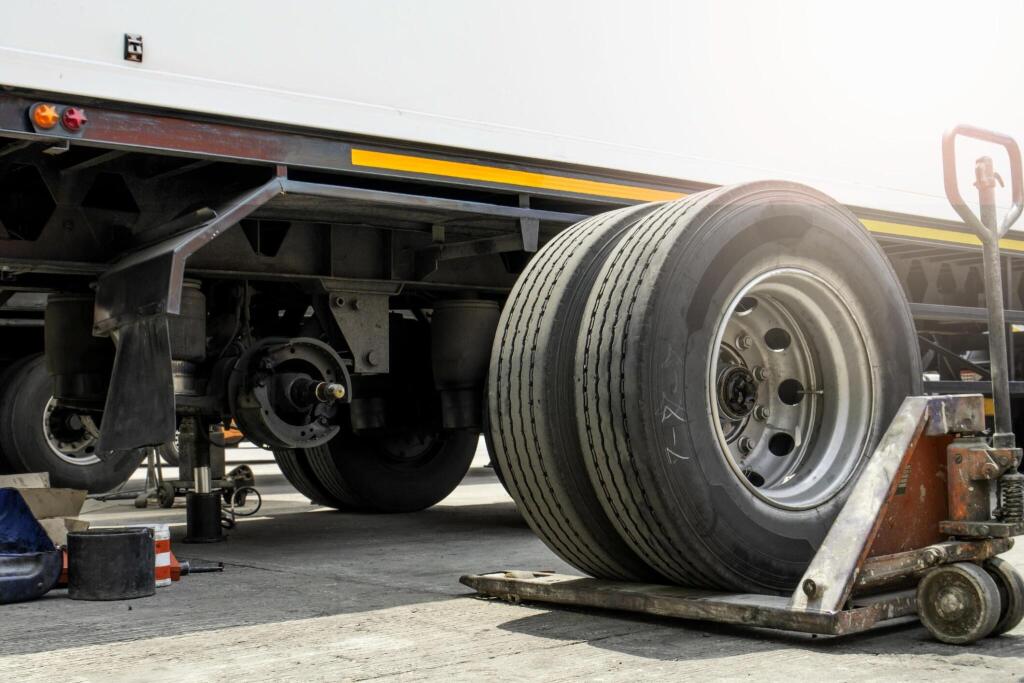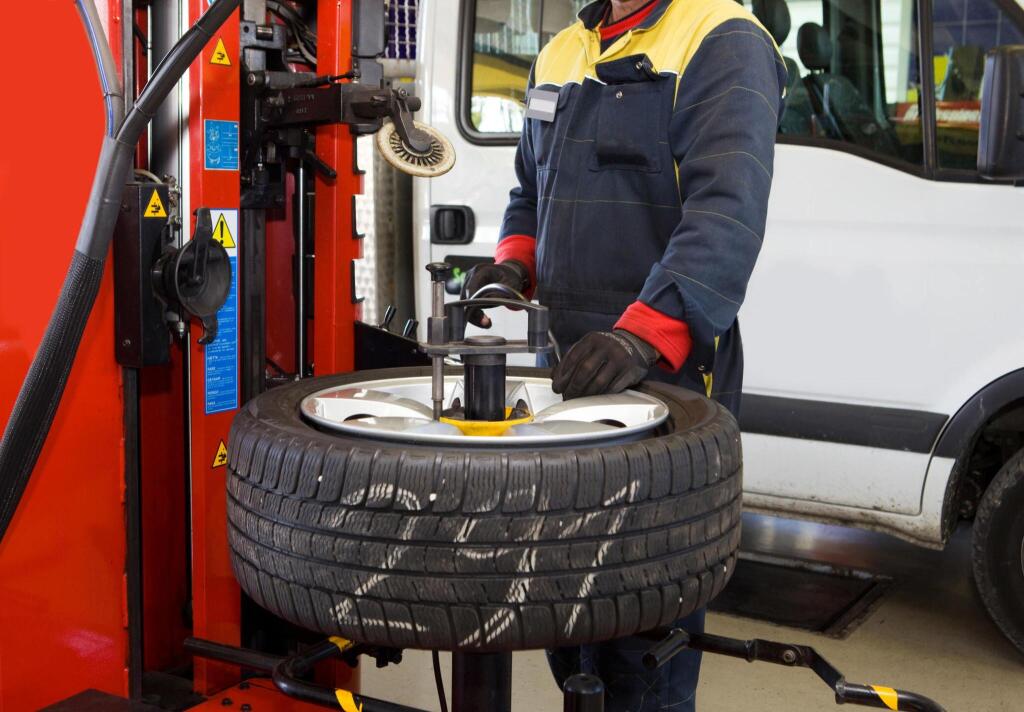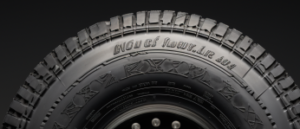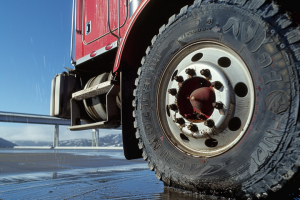Last Updated on April 22, 2024
Aligning Your Ride: Introduction To Wheel Alignment
Wheel alignment is crucial for preserving a truck’s functionality and general health. Proper wheel alignment is sometimes disregarded in the routine maintenance plan, but it’s vital for more than just safe and smooth driving. It also extends the truck’s tire life, improves fuel economy, and preserves the mechanical integrity of the entire car. Proper wheel alignment is essential for trucks because of the unique problems they confront due to their size and high loads.
Wheel alignment plays a crucial role in the longevity and dependability of these heavy-duty vehicles, providing stability and control on a variety of terrains as well as minimizing wear and tear on pricey tire sets. With a focus on trucks, this overview guide seeks to clarify the subtleties of wheel alignment, highlighting its significance and effect on the functionality and security of these massive vehicles.
Overview of Wheel Alignment Importance for Trucks
Wheel alignment is a crucial aspect of truck maintenance that is often overlooked. It involves adjusting the wheel angles to the vehicle manufacturer’s specifications. Proper wheel alignment ensures trucks’ safety, efficiency, and longevity.
- Safety: A misaligned wheel can seriously affect handling and stability because trucks are usually larger and heavier than passenger cars. An appropriately aligned automobile will travel straight and true, lowering the chance of accidents caused by poor handling.
- Efficiency: Improper alignment can result in uneven tire wear, lowering fuel efficiency and shortening tire life. Proper wheel alignment reduces the force required for the truck to advance, increasing fuel efficiency.
- Longevity: Routine wheel alignment can extend the life of a truck’s tires. Misaligned tires wear unevenly and require more frequent replacements, which can add up to a high cost throughout the truck’s life.
Objectives of the Article
This article’s main goal is to inform truck owners and operators about the value of wheel alignment, especially while installing tires. Although many truck owners take good care of their tires, it is equally critical to comprehend how wheel alignment affects your car’s general health.
By the end of this article, you should have a comprehensive understanding of the importance of wheel alignment and how it affects your truck’s longevity and general performance. With this information, they will be better equipped to make decisions on the maintenance of their trucks, which will lead to safer roads and more effective operations.

Understanding Wheel Alignment
Wheel alignment is the process of adjusting the wheels’ angles to the vehicle’s body and each other. It is a crucial part of car maintenance. This procedure guarantees that the wheels point straight, the tires meet the road at the proper angle, and the wheels are centered within the wheel wells. The three crucial angles for wheel alignment are toe, caster, and camber.
- When viewed from the front or back of the car, the camber is the wheel’s angle concerning the vertical direction. Uneven tire wear results from a camber that is off if the top of the wheel leans too in or out.
- The angle of the steering pivot seen from the side of the car is known as the caster. This angle impacts cornering and straight-line stability.
- In contrast to a straight-ahead position, the toe describes the direction in which the tires are oriented. Tires that are misaligned toe-wise may “feather” and wear unevenly.
- The suspension and steering must be appropriately aligned for the truck to perform at its best and have the most extended tire life.
Why Wheel Alignment Matters for Trucks
Wheel alignment is essential for trucks for several reasons:
- Stability and Heavy Loads: Stability is an important safety issue since trucks frequently transport large loads. Maintaining the truck’s stability through proper wheel alignment lowers the chance of collisions, particularly while negotiating curves and uneven terrain.
- Tire Durability and Cost Effectiveness: Improper alignment causes uneven and fast tire wear, requiring frequent tire replacements. The vehicle’s size and quantity of tires can add up to a significant cost. Proper alignment prolongs tire life, achieving long-term cost savings.
- Fuel Efficiency: Rolling resistance from misaligned wheels might rise, requiring more effort from the truck’s engine to drive the vehicle and more fuel. Properly aligned wheels decrease this resistance, increasing fuel efficiency.
- Overall Vehicle Health: Wheel alignment impacts the suspension and steering systems of trucks. Frequent alignment checks can help detect and avert more extensive mechanical problems that may require expensive repairs.
- Comfort and Safety for the Driver: Driving a truck with adequately aligned wheels is more convenient and pleasant. It makes driving safer by lowering steering effort and preventing the car from pulling to one side.
Wheel alignment is vital to truck maintenance and impacts safety, efficiency, and operational costs. Regular checks and adjustments are necessary to ensure the truck performs optimally and safely over its lifetime. This section highlights the importance of wheel alignment in trucks’ overall health and performance, offering valuable insights to truck owners and operators frequenting “Tires Easy Truck.”
Pros of Wheel Alignment During Tire Installation
Wheel alignment is an essential part of truck maintenance frequently neglected, mainly while tires are installed. However, this mistake could have several adverse effects on the truck’s functionality, security, and cost of operation.
Aligning the wheels of a truck during tire installation is not just a best practice; it is a strategic move that can yield significant benefits for the vehicle’s overall functionality and the driver’s experience. This detailed exploration delves into the advantages of wheel alignment during truck tire installation.
The benefits of performing this crucial maintenance work include increased fuel efficiency, longer tire life, improved on-road safety and stability, and enhanced comfort during driving. This essay aims to give truck owners, operators, and enthusiasts a thorough understanding of why tire installation should always start with wheel alignment. It emphasizes how important it is to uphold vehicles’ high performance and safety requirements.
Enhanced Safety and Stability on the Road
Improving road safety and stability is one of the most significant advantages of wheel alignment during tire installation. The heavy truck loads require precise control and stability to ensure safe transportation. Misaligned wheels can cause handling issues, especially at higher speeds or in rough driving conditions, which can cause the automobile to sway or drift. Proper alignment guarantees that the tires are parallel to one another and perpendicular to the road to provide the best possible contact with the road surface. This improves the truck’s overall stability and lowers the possibility of mishaps brought on by sloppy handling.
Improved Fuel Efficiency
There is a direct correlation between a truck’s fuel efficiency and wheel alignment. Because the tires are not moving as effectively, misaligned wheels increase rolling resistance. Because of this resistance, the engine has to work harder to move the vehicle ahead, using more gasoline. When this resistance is reduced through proper alignment, the truck can travel more freely and effectively, which increases fuel efficiency. For long-haul trucks, even a little increase in fuel efficiency can add up to significant financial savings over time.
Extended Tire Life and Performance
Tires are a considerable investment, particularly for trucks. Wheel alignment is crucial in extending tire life and maintaining tire performance. Misalignment causes uneven and accelerated tire wear, as certain parts bear more weight and hit the road at an incorrect angle. When wheels are correctly aligned, tire wear is evenly distributed, extending the lifespan of the tires. This not only improves the performance of the tires over their lifetime but also represents a significant cost saving, as it reduces the frequency of tire replacements.
Better Handling and Drive Comfort
An effective wheel alignment greatly enhances a truck’s handling and driving comfort. Driving a car with adequately aligned wheels is smoother and more predictable since it reacts better to steering and road conditions. This is especially crucial for trucks, as their size and weight can make them more challenging to maneuver. Better handling also lessens driver fatigue, which is essential for long-haul truck drivers on the road for extended periods.
The benefits of wheel alignment during tire installation for trucks are numerous and impactful. From enhanced safety and stability to improved fuel efficiency, extended tire life, and better handling, the advantages underscore the importance of this often-overlooked aspect of truck maintenance.
Truck owners and operators should consider wheel alignment an essential part of their vehicle’s care routine, ensuring optimal performance and safety on the road. This detailed discussion aims to provide valuable insights to the readers of “Tires Easy Truck,” highlighting the importance of wheel alignment in overall truck maintenance and operation.
Cons of Wheel Alignment During Tire Installation
Wheel alignment during tire installation has many advantages for trucks, but there may be drawbacks that should also be taken into account. Truck owners and operators must be aware of these drawbacks to make the best decisions about the upkeep of their vehicles.
We will explore the less-discussed aspects of wheel alignment during tire installation, such as the additional costs and time involved, the risks of potential misalignment, and the frequency at which realignment may be necessary. This analysis aims to provide a balanced view, helping those involved in truck maintenance at Tires Easy Truck weigh the advantages and disadvantages before proceeding with this essential service.
Additional Costs and Time
The extra money and time required for wheel alignment during tire installation is one of the main disadvantages. The process of aligning the wheels calls for specific tools and knowledgeable mechanics. This may raise the total cost of tire installation, which truck owners on a limited budget may find a significant factor. Furthermore, wheel alignment can be a time-consuming procedure. The additional time spent in the shop for commercial trucks with strict deadlines might result in lost revenue and operating time.
Possible Misalignment Risks
One of the most significant drawbacks is the additional cost and time needed for wheel alignment during tire installation. It takes specialized equipment and skilled workers to align the wheels. This could add significantly to the overall cost of tire installation, which vehicle owners with tight budgets might find unfavorable. Wheel alignment might also take a lot of time to complete. Commercial trucks with tight deadlines may lose operational time and money due to the extra time spent on the repair.
Frequency of Realignment Necessity
Lastly, consider how often wheel alignment might be required. More frequent alignments may be necessary for trucks, especially those towing large loads or driving over uneven terrain. This implies that it might not take long for another alignment to be required, even after one was done during tire installation. This ongoing requirement can become costly and time-consuming, particularly for fleet managers who oversee several vehicles.
Wheel alignment has possible disadvantages, even though it is usually advantageous during tire installation. These include the possibility of misalignment, the requirement for more time and money, and the necessity of periodic realignments.
Truck owners and operators need to carefully weigh these aspects to make decisions that are in line with their operational requirements and financial limits. After a thorough examination of the drawbacks of wheel alignment during tire installation, “Tires Easy Truck” readers should be able to make well-informed maintenance decisions for their vehicles.

Comparative Analysis: Aligning at Installation vs. Postponing
One of the options that operators and owners of trucks frequently have to make regarding maintenance is whether to align the wheels at the time of tire installation or to put it off until later. This decision may affect the truck’s performance, maintenance expenses, and timetable in the long run and be purely convenient in the short term. In this instance, we perform a thorough comparative study between aligning the wheels during tire installation and delaying it, emphasizing the benefits that come immediately vs. later, the long-term financial effects, and the effect on the truck maintenance plan.
Immediate vs. Delayed Benefits
Improved safety and performance are the immediate benefits of high-quality truck maintenance; longer vehicle lifespans and lower long-term repair costs are the delayed benefits. Making timely maintenance a priority will help avoid more significant problems later on.
Aligning at Installation:
- Immediate benefits include enhanced safety, improved fuel efficiency, and better handling right from the start.
- Ensures that new tires wear evenly from the beginning, prolonging their life.
- Knowing that the truck is optimized for performance and safety provides peace of mind.
Postponing Alignment:
- It may seem convenient in the short term, especially if you are trying to minimize downtime.
- However, delayed alignment can lead to uneven tire wear, reducing the lifespan of new tires.
- Potential for reduced safety and performance until alignment is eventually done.
Cost Implications Over Time
Regular truck maintenance and high-quality parts may be more expensive up front, but they can save much money over time. Frequent maintenance improves cost efficiency by extending the truck’s operational life and preventing costly failures.
Aligning at Installation:
- Initially, this may seem more expensive due to the added cost of alignment services.
- Over time, this can lead to savings by extending the life of the tires and improving fuel efficiency.
- Regular alignments are part of tire installation and can prevent more costly repairs associated with suspension and steering issues caused by misalignment.
Postponing Alignment:
- Initially, it is less costly as it avoids the immediate expense of the alignment service.
- Over time, the costs can accumulate due to increased tire wear, leading to earlier replacements.
- Potential for higher fuel costs and the risk of expensive repairs due to misalignment-related damage.
Impact on Truck Maintenance Schedule
The truck maintenance schedule is directly impacted by the caliber of the parts and the repair frequency. Superior components and regular maintenance can increase the time between major overhauls, keeping the truck in top shape and lowering the need for expensive repairs.
Aligning at Installation:
- Integrating wheel alignment into the tire installation process streamlines maintenance activities.
- Reduces the need for additional service appointments, saving time and simplifying logistics.
- Regular alignment checks become a part of the routine maintenance schedule, ensuring consistent vehicle performance and safety.
Postponing Alignment:
- It can complicate the maintenance schedule by requiring separate appointments for alignment.
- Risks of misalignment-related issues can lead to unscheduled maintenance and downtime.
- Increases the administrative burden of managing and scheduling separate maintenance activities.
Wheel alignment during tire installation is a proactive method of vehicle maintenance that provides short-term advantages, long-term cost savings, and a simplified maintenance plan. However, delaying wheel alignment might result in higher long-term expenses and a more complicated maintenance schedule, even though it may seem handy at the time.
Truck owners and operators should carefully consider these variables to make choices that are most in line with their operating requirements and long-term financial considerations. This analysis aims to help “Tires Easy Truck” readers comprehend the broader effects of wheel alignment timing on truck performance and maintenance.
Expert Opinions and Industry Standards
In commercial trucking, Maintaining vehicles’ longevity, safety, and efficiency depends on following industry guidelines and paying attention to professional advice. Industry advice and the wisdom of seasoned specialists and mechanics provide an essential foundation of knowledge regarding truck wheel alignment. For the benefit of truck owners and operators, this section explores these professional perspectives and the current wheel alignment industry norms.
Insights from Truck Mechanics and Technicians
Skilled truck mechanics and technicians have years of real-world experience after working on various vehicle models in a range of operating environments. Their wheel alignment insights are invaluable.
- Experts are in complete agreement regarding the significance of routine wheel alignment checks. Due to the heavy use of commercial trucks, they advise alignment inspections at least once a year or after every 50,000 to 60,000 miles.
- According to mechanics, wheel alignment is greatly impacted by the kind of load and the truck’s operating environment. Trucks that tow large loads or travel over rough terrain regularly require more frequent alignment inspections.
- Telltale indicators of misalignment include uneven tire wear, the truck dragging to one side, and an off-center steering wheel, which technicians frequently identify. They stress that these indicators must be taken seriously and not ignored.
- Experts emphasize the importance of precise alignment, cautioning that even a tiny misalignment can significantly affect tire wear and fuel efficiency.
Industry Recommendations for Truck Wheel Alignment
Industry standards and recommendations serve as a guideline for maintaining trucks in optimum condition:
- Alignment Specifications: Industry standards outline the ideal camber, caster, and toe angles for various truck types. Following these guidelines is essential to achieving correct wheel alignment.
- Frequency of Alignment: According to industry recommendations, wheel alignment should be done every 12 months or 50,000 miles, whichever comes first. However, depending on the truck’s brand, model, and usage habits, this may change.
- Adjustment following Repairs: After central suspension or steering system repairs, it is customary to perform a wheel alignment because these repairs might immediately affect the alignment.
- Use of Advanced Technology: The industry is increasingly recommending the use of advanced technology for wheel alignment. Laser alignment systems and computerized tools offer greater precision and are recommended for modern trucks.
- Training and Certification: The education and certification of professionals who execute wheel alignments are highly valued. The industry advises hiring services from qualified experts to guarantee dependability and correctness.
Incorporating these insights and standards into truck owners’ and operators’ maintenance routines can improve their vehicles’ safety, efficiency, and longevity. As part of the comprehensive blog post for “Tires Easy Truck,” this article aims to provide an in-depth understanding of the importance of wheel alignment from the perspective of industry professionals and standards.
Real-Life Scenarios: Case Studies
Case studies and real-world scenarios are the most effective ways to demonstrate the importance of wheel alignment in truck maintenance. These real-world examples effectively highlight the advantages of timely alignments and the difficulties that arise when alignment is overlooked. This section delves into the challenges of incorrect alignment and presents examples of timely alignment success stories. We offer insightful lessons for truck owners and operators frequenting “Tires Easy Truck.”
Success Stories of Timely Alignments
Timely alignments in trucks have led to success stories where consistent and proper alignment has resulted in extended tire life, improved fuel efficiency, and better handling. These positive outcomes enhance safety and result in significant cost savings over time.
Extended Tire Life and Reduced Costs:
- Case Study 1: A fleet manager using long-haul trucks stated that tire life was noticeably increased after implementing a routine wheel alignment program. The fleet used to replace its tires every 60,000 miles. Tire life increased to over 100,000 miles when routine alignments were implemented, which resulted in significant cost savings.
Improved Fuel Efficiency:
- Case Study 2: A transport company observed some noticeable improvement in fuel efficiency following a strict alignment schedule. They saw a 2% boost in fuel economy throughout their fleet, which resulted in sizeable yearly fuel cost reductions.
Enhanced Safety and Reduced Maintenance Costs:
- Case Study 3: A trucking company experienced reduced maintenance costs and fewer safety incidents after making wheel alignment an essential part of its maintenance routine. Regular alignments led to more predictable handling and less strain on suspension components.
Challenges Faced Without Proper Alignment
Trucks that are not correctly aligned frequently experience handling issues, uneven tire wear, and higher strain on the suspension system. This may affect the general performance and safety of the vehicle and result in increased maintenance expenses, shorter tire life, and possibly hazardous driving conditions.
Increased Tire Wear and Replacement Costs:
- Case Study 4: A solo truck operator neglected wheel alignment, which led to severe uneven tire wear. This resulted in the need for premature tire replacements, impacting the operator’s profitability due to the high cost of truck tires.
Reduced Fuel Efficiency and Increased Operational Costs:
- Case Study 5: A logistics firm failed to recognize the significance of wheel alignment. As a result, their trucks’ fuel economy decreased. When multiplied over a large fleet, the extra fuel expenditures led to a discernible rise in operating expenses.
Safety Incidents and Liability Concerns:
- Case Study 6: A trucking company faced a severe safety incident due to misalignment, which caused handling difficulties and contributed to an accident. This incident highlighted the importance of regular wheel alignment for safety and highlighted potential liability issues arising from inadequate vehicle maintenance.
These real-life scenarios underscore the importance of regular wheel alignment in truck operations’ operational efficiency, safety, and cost-effectiveness. Success stories of timely alignments highlight the positive impact on tire life, fuel efficiency, and overall vehicle health. Conversely, the challenges faced without proper alignment reveal the risks of increased costs, reduced safety, and potential liability concerns.
These case studies serve as practical examples for truck owners and operators, emphasizing the critical role of wheel alignment in maintaining their vehicles’ performance and safety standards. This detailed exploration aims to provide readers of “Tires Easy Truck” with concrete, real-world insights into the consequences of wheel alignment decisions in the trucking industry.
Best Practices in Wheel Alignment for Truck Owners
Truck owners’ durability, safety, and efficiency depend on their knowledge of and adherence to wheel alignment best practices. To guarantee that their trucks receive the finest care possible, this section concentrates on when to choose wheel alignment and how to select the best service provider.
When Should I Choose Wheel Alignment?
Consider getting your wheels aligned when you observe uneven tire wear, the truck dragging to one side, or after striking a large pothole or curb. Every 6,000 to 12,000 miles, routine alignment checks are advised to maintain optimal vehicle alignment.
- Regular Maintenance Schedule: Incorporate wheel alignment into your normal maintenance routine. Industry standards recommend annual alignment checks or every 50,000 to 60,000 miles, whichever comes first.
- After New Tire Installation: Always consider a wheel alignment when installing new tires to ensure they wear evenly from the start.
- Following Suspension or Steering Repairs: Any repairs or replacements in the suspension or steering systems can affect wheel alignment, necessitating a check.
- Signs of Alignment Issues: Look for signs such as uneven tire wear, the truck pulling to one side, or an off-centered steering wheel. These are indicators that your vehicle may need a wheel alignment.
- After a Significant Impact: Check the alignment if your truck has been involved in an accident or experienced a significant impact, such as hitting a curb or pothole.

How to Choose the Right Service Provider
To select the best wheel alignment repair provider, search for qualified experts with truck maintenance experience. Verify their reputation for dependability and high-quality service, look for excellent client evaluations, and enquire about the technology and methods utilized.
- Certification and Experience: Look for a service provider with certified technicians and truck wheel alignment experience. The intricacies of truck alignment require specialized knowledge.
- Advanced Alignment Technology: Choose a service provider with state-of-the-art alignment equipment. Modern laser or computerized alignment systems offer higher accuracy.
- Reputation and Reviews: Look for service providers with a strong reputation in the trucking community. Check online reviews or ask for recommendations from other truck owners or operators.
- Understand Their Process: A reputable service provider should be willing to explain their alignment process and answer any questions you have. Transparency is critical to trust and quality service.
- Post-Alignment Support: Consider providers who offer post-alignment support or checks. This can be crucial in ensuring that the alignment remains accurate over time.
This guide aims to assist readers of “Tires Easy Truck” in making informed decisions regarding wheel alignment for their trucks, ensuring the best care and maintenance for these critical vehicles.
Conclusion & Recommendations
In the realm of truck maintenance, the significance of wheel alignment cannot be overstated. This comprehensive guide has underscored the various facets of wheel alignment – from understanding its basics and assessing the pros and cons of aligning during tire installation to insights from industry experts and real-life scenarios. The key takeaways from this exploration highlight that regular and accurate wheel alignment is crucial for ensuring truck safety, efficiency, and longevity.
Summarizing the Key Takeaways
Wheel alignment is an essential component that impacts a truck’s performance; it is not just a simple checkup. Proper alignment guarantees increased road safety and stability, more fuel economy, longer tire life, and improved handling and comfort for the driver. On the other hand, skipping wheel alignment might eventually result in higher expenses, safety hazards, and difficulty keeping up a regular maintenance program.
Final Recommendations for Truck Owners
Truck owners should prioritize regular maintenance, including timely oil changes, tire checks, and alignments, to ensure vehicle longevity and safety. Staying informed about and adhering to manufacturer guidelines and choosing reputable service providers can significantly enhance the truck’s performance and reduce long-term costs.
- Incorporate Regular Alignment Checks: Include wheel alignment in your regular maintenance schedule. Adhering to the recommended frequency can prevent many long-term issues.
- Be Vigilant of Alignment Signs: Stay alert to the signs of misalignment, such as uneven tire wear or the vehicle pulling to one side. Early detection can save costs and prevent more significant issues.
- Choose Qualified Service Providers: To ensure precision and dependability in the wheel alignment service, choose qualified and experienced professionals.
- Consider Alignment with New Tires: Aligning your truck’s wheels during installation maximizes tire life and performance.
- Stay Informed and Proactive: Stay current with the most recent guidelines and standards within the business, and don’t be afraid to seek advice from experts when in doubt.
Why Tires Easy Trucks?
When considering these suggestions, keep in mind that tire quality is just as important as wheel alignment. At Tires Easy Truck, we provide premium tires for every kind of truck. Whether you’re after performance, efficiency, or durability, our assortment has you covered. With our professional guidance and assistance, you can ensure your truck is constantly ready for the road and operating at peak efficiency.
Explore our collection and find the perfect tires for your truck today.
FAQs
Do you need an alignment when installing tires?
It is highly advised that a wheel alignment be performed when installing new tires. This improves the truck’s performance and safety by ensuring the tires wear evenly and last longer.
Does wheel alignment affect the ride?
Yes, wheel alignment greatly impacts the quality of the ride. Proper alignment guarantees better handling, increased stability, and a more comfortable ride. It also contributes to better fuel economy and less tire wear.
What are the advantages of wheel alignment?
The advantages of wheel alignment include improved fuel efficiency, extended tire life, enhanced safety, better handling, and overall improved truck performance. It also helps in preventing uneven tire wear and potential steering issues.
Is wheel alignment excellent or bad?
Wheel alignment is essential for maintaining the truck’s health. By aligning the wheels to the manufacturer’s specifications, it ensures the vehicle operates efficiently, safely, and economically.
What is wheel alignment for trucks?
Wheel alignment entails modifying the wheel angles for trucks to ensure they match the requirements specified by the car manufacturer. This is essential for vehicles to remain stable, safe, and efficient—especially when carrying a big load.
Do trucks need 4-wheel alignment?
A four-wheel alignment is usually necessary for trucks, particularly if they have independent rear suspensions or four-wheel drive. As a result, all wheels operate at their best since they are parallel to one another and perpendicular to the road.
How do I know if my truck needs an alignment?
Signs your truck needs an alignment include uneven tire wear, the car pulling to one side, a steering wheel that’s off-center when driving straight, and unusual steering or handling characteristics.
What is normal wheel alignment?
The term “normal wheel alignment” describes aligning a car’s wheels within the manufacturer’s guidelines. To provide the best possible tire contact with the road, this involves adjusting the camber, caster, and toe angles.










